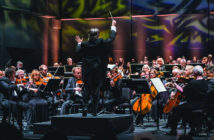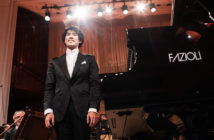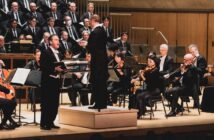Summer in Montreal has many reliable musical highlights. Among the less-written-about is the annual concert in the Maison symphonique by the Orchestre de la Francophonie under its founding music director, Jean-Philippe Tremblay. The instalment on Wednesday kept the streak alive.
The big item was Bruckner’s Sixth, no less a symphony than those that precede and follow it. This performance by the international ensemble of young adults (comprising both francophones and those who wish they were) was grand in overall concept and vibrant in bar-by-bar execution. It would be hard to imagine a truer expression of Bruckner’s lofty brand of romanticism than what the concerted strings gave us in the Adagio.
Other elements were there: noble brass, expressive woodwinds and a top timpanist, this last essential to realizing the tremendous excitement that marks the arrival of the recapitulation of the first movement. If a few entries were tentative in the opening 45 seconds, this almost enhanced the arrival of the full-blast fortissimo.
Horns and pizzicato strings in the Trio were defiant rather than comic: the stern character of the Scherzo was not compromised. Bruckner’s finale is sometimes considered a problem child, with its insistent quirky rhythms. Tremblay kept the beat vibrant and the rhetoric varied. Not a moment sagged.
This conductor’s podium style is characterized by ample circles in the air that communicate legato above all. Yet there were many telling details. One felt that Tremblay understood the range and intensity of Bruckner’s achievement and conveyed his enthusiasm to the musicians.
If not all those details were spotless, the explanation might reside in rehearsal demands of Animal-Machine, the mostly atonal potpourri by Alexandre David that opened the program. Far from a brief appetizer, this commissioned piece of more than 20 minutes encompassed electroacoustic effects, apparent audio samples of wildlife (or livestock) and an elaborate theatrical element that required most of the musicians to exit the stage (not quite à la Haydn’s “Farewell” Symphony, for they were required to continue playing, either backstage or in the auditorium).
It all began with a mock tuning session. It is hard to say which avant-garde provocateur first proposed this device, but it was surely well before 1989, the year of the birth of the composer. Another ancient trope was to blur the boundary of orchestration and electronics. Perhaps old-fashioned modernism is due for a comeback. If so, one hopes for more stress on economy of time. Twelve or 15 minutes of this would have been fine.
Before intermission we heard Liszt’s Second Piano Concerto in what might better be described an open rehearsal than a finished performance. Soloist Anne-Marie Dubois applied a lyrical touch to dreamy passages and managed some of the many technical demands of this very difficult work with considerable accomplishment.
These successful interludes could not quite compensate for the approximate outbursts of bravura and the would-be accelerandi that remained resolutely stuck in neutral. Dubois was using sheet music. It might have been interesting to hear the result had she played from memory.
Possibly this was not the weirdest aspect of the concert. We might have expected the lengthy acknowledgement of sponsors at the start (Canimex among them) and even the volunteers accepting cash donations in jars at intermission. But who could have predicted an encore – the hum-along Barcarolle from Offenbach’s The Tales of Hoffmann?
This was probably the first time I had heard a Bruckner symphony followed by an encore. Well, the crowd of about 800 (confined to the parterre) did not seem to mind.














